Have you ever seen a product image so crisp and finely detailed that you could have sworn it was a photograph? Maybe the image almost seemed too refined and put together to even be real. You were probably pleasantly surprised when you found out that it was actually a 3D rendering, not a photograph.
3D rendering, the creation of a digital image from a photograph or prototype, has begun to take the manufacturing industry by storm. Everyone from automobile design companies to real estate firms have latched onto this technology and used it to help market and sell their products.
Furniture manufacturers, in particular, have begun to incorporate 3D rendering into their operations and marketing practices. With the innovative capabilities that photorealistic rendering affords them, they have been able to upgrade their marketing campaigns to new heights.
Are you curious as to how furniture manufacturers use digital product rendering freelancers to draw in higher conversion rates? Here are 27 ways in which photorealistic rendering continues to help furniture manufacturers market their products.
What Is Digital Product Rendering for Furniture?
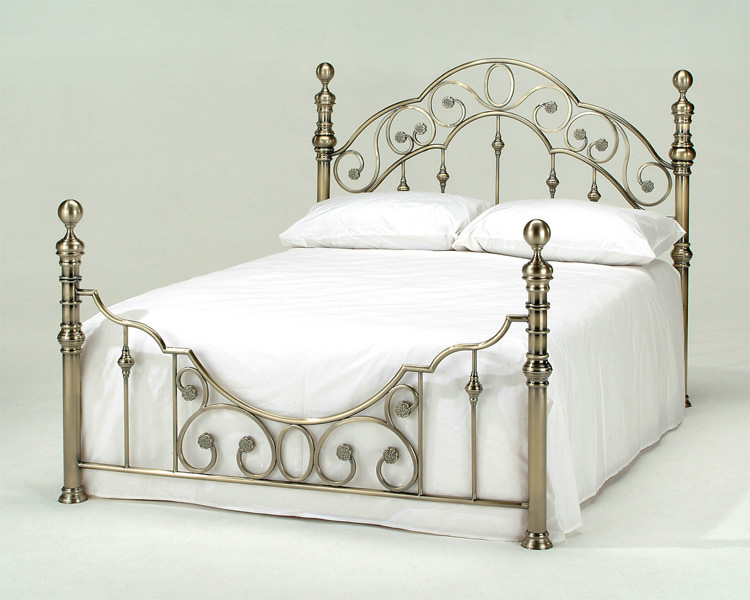
Imagine a product rendering of a bed so realistic that you are tempted to brush your hand over its soft texture.
Thanks to 3D rendering technology, marketers are able to digitally assemble images from photographs and prototypes that contain the most minute details, such as a surface irregularity or a specific lighting angle. Together, these details can create an image so realistic that it rivals that of one taken from a camera.
Due to its inexpensive pricing and fast turnaround, an increasing number of furniture companies are turning to digital product rendering to produce product images for their catalogs and websites.
Benefits and Features
3D rendering gives artists complete control over the end result of an image. Everything from lighting to the exact angle through which the image is viewed can be adjusted. Companies no longer have to invest in travel, props, photographers, and interior design services to obtain a desired look.
Below is a list of several key benefits and features that digital product rendering offers furniture companies.
- Perfect lighting and angles
- Astonishing accuracy and precise product measurements
- Streamlined branding
- Quick edits
Areas Where Furniture Companies Place 3D Rendering Images to Market Their Products

One of the most beautiful things about 3D rendering technology is that there are no limits as to what it can be used for. Even as the world appears to advance past traditional mediums, such as print advertising and billboards, companies have found uses for 3D rendering in both traditional and emerging marketing platforms.
Online/Web Marketing
For online and web marketing, 3D rendering is typically used in:
- Blogs
- Emails
- Videos
- Web pages
Some furniture companies add interactive aspects to their online images, allowing users to manipulate and adjust them to gain a deeper perspective into their features. They may also be able to customize furniture by changing their colors or sizes.
Offline/Print Materials
3D rendering isn’t limited to online materials. Companies have used photorealistic images in:
- Print ads in magazines and newspapers
- Billboards
- Product packaging
While offline and print materials obviously lack the interactive qualities provided by digital forms, they are still effective in attracting interest from users through their high-quality imagery.
New Product Staging
The old method for staging products is expensive and time-consuming. Rather than taking hours on end arranging photoshoots for products, companies are electing to stage new products using 3D rendering. These photorealistic images can be placed in almost any setting you could imagine: an outside deck facing the ocean, the roof of a hotel in the city, or even a barn in the countryside.
This is only a small list of the benefits digital product rendering can bring furniture marketers. As you will soon see, the possibilities that 3D visualization services offer furniture companies is tenfold.
How 3D Product Rendering Can Help Furniture Manufacturers with Marketing
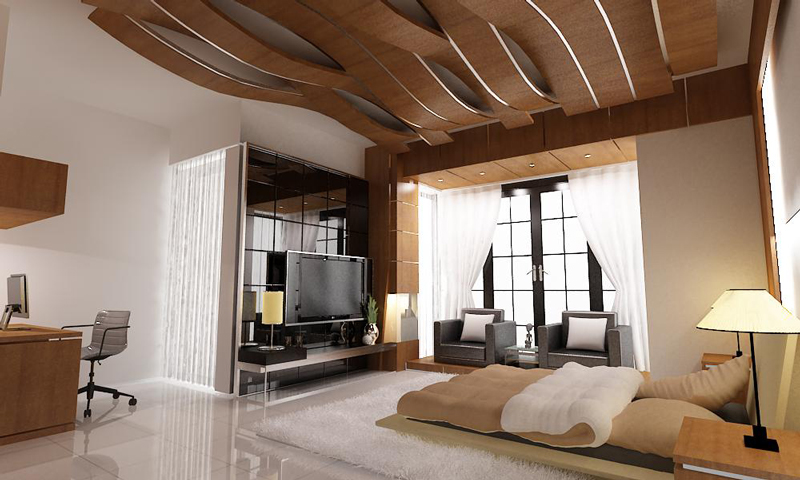
1. Photorealistic Rendering Allows Companies to Showcase Fine Details in Furniture
Most customers do not have the opportunity, or even the time, to inspect furniture up-close in a traditional showroom. In the past, customers could view furniture in a print or online catalogue, but there was a limit as to what features they could actually see in-depth. Even if they did try to zoom in on an image, they were given a blurry, out-of-focus view of the product. This was, of course, useless to them.
Nowadays, furniture marketers can add 3D product renderings to their online catalogs. Users are able to zoom in and inspect everything from the seams to the nails on these digitally rendered products. Companies sometimes go a step further by adding component shots, bird’s eye views, 360 views, and virtual reality (VR) or augmented reality (AR) capabilities to their renderings.
2. Furniture Companies Can Place Products in Specific Settings
Seeing a chair or sofa sitting by itself against an empty, white background will probably not entice most customers into buying it. Without any sense of setting or background details, it is hard for customers to visualize the furniture pieces inside their own homes.
With digital product rendering, furniture marketers can place products inside any setting or background they choose. These set-ups are known as lifestyle product shots. A chair can be placed behind a desk inside a dorm. A sofa can be pushed along a brick wall in a game room. A crib can be set inside a yellow nursery. The possibilities are endless.
By placing furniture inside an actual setting, buyers are more likely to respond to it in a positive and emotional manner than if it were shown alone. The company is not only selling the product itself, but also the purpose for which it is made.
3. Online Guests Can Seamlessly Customize Furniture Models
Companies who use 3D furniture rendering freelancers save significant time and money compared to those who stick to traditional photography to capture their products. For instance, rather than separately shooting multiple furniture models in different styles and colors before uploading them online, companies can now directly upload a single 3D product model to their website.
With the help of product rendering technology, designers then create different versions of the same furniture model, whether by color or by size, electronically.
Say a customer likes the exterior design of a chair, but they aren’t a huge fan of its magenta color. Maybe they want to see what the chair looks like in a darker shade.
The user can customize the model for themselves by clicking on the different color options offered on the product page. In an instant, that magenta chair can switch to a deep navy blue. Some companies take this technology a step further and implement it into their ads, creating a unique, interactive experience for viewers.
4. 3D Rendered Images Boost Email Newsletter Click Rates
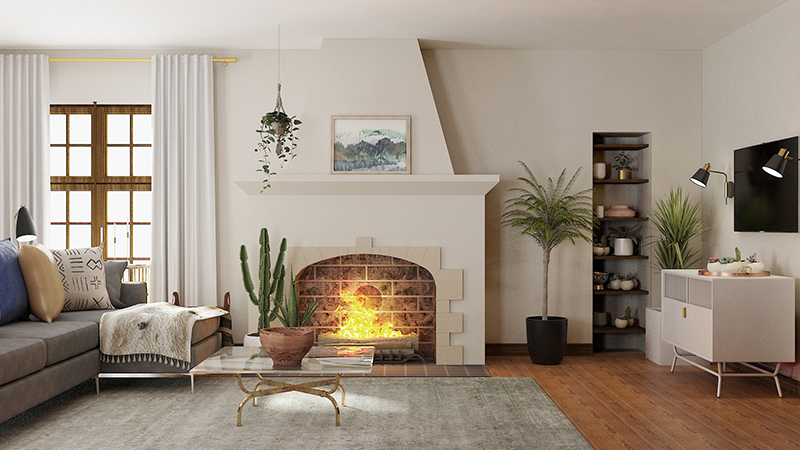
Email marketing is one of the most effective strategies for maintaining customer loyalty and even reactivating interest in dormant customers. As a result, marketers are always looking for ways to grab their subscribers’ attention and prevent them from sending their emails to the trash bin.
Attractive, eye-catching visuals play a key role in how successful an email marketing campaign turns out. When promoting new models, sales, and events, marketers must always accompany these headlines with high-impact imagery. Photorealistic rendering has become the go-to source for procuring these visuals, thanks to the high-quality images it produces.
Artists are also able to create as many 3D product models as necessary within a short time period. Because some companies send out emails as often as once a week, it is imperative that they provide fresh imagery for each email to avoid boring or annoying their subscribers.
5. Businesses Can Save Time and Money by Using Product Visualization Instead of Photography
Building a single piece of furniture for just one photoshoot is time-consuming, inefficient, and costly. You have to spend money and time assembling the furniture, hiring a photographer, and then repeating this tedious process until you finally finish photographing all of the furniture in your collection.
Most photoshoots cost around several thousand dollars an item and take at least a week to shoot and edit. On the other hand, 3D rendering only costs a couple hundred dollars for a single image and typically takes around 24 hours to make.
To create a digital rendering of your furniture collection, you can simply hire a CAD service and they will take it from there. They can even spruce up the images with alluring background design and flattering lighting and angles.
6. Marketers Can Choose Different Image Views to Showcase Their Products
Depending on a campaign’s goals, one rendering type may be more effective than the other. The three main renders are:
- Lifestyle
- Propped image
- Isolated image
Lifestyle
In a lifestyle image, the artist will place the furniture in a real-life setting, such as a living room or bedroom. Luxury furniture companies will often do this, as their customers are looking for products for places that they aspire to build or live in themselves. Background objects and decorations can also be used to instill a sense of glamour and lavishness. This, in turn, will give customers deeper insight into the product’s quality and price.
Propped
A propped image usually includes the item for sale along with several other objects in the background as decor. They are not meant to distract or take attention away from the product for sale, but rather help present it in the best light.
Isolated
As the name implies, an isolated image only displays the furniture on sale. Most isolated images have a white background. On the rare occasion, artists will create a black or brightly-colored background. Intricate textures, such as a rough concrete background, may also be used.
7. It Improves SEO Rankings
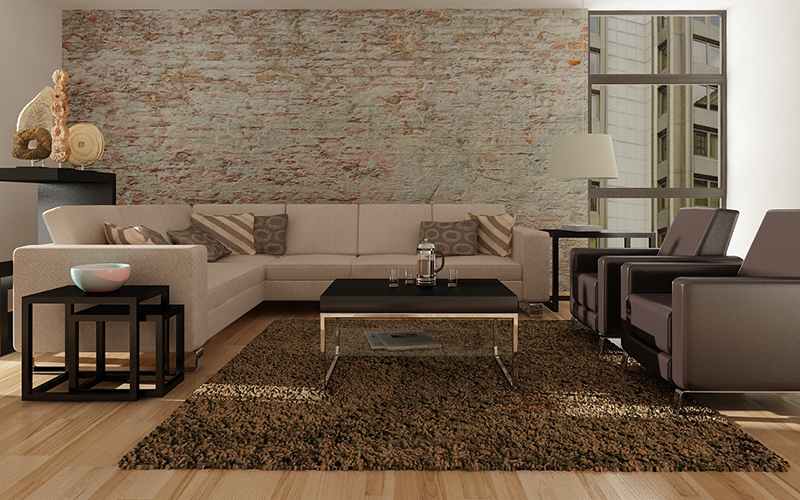
Want your website to rank higher? Implementing enticing images in ads, emails, and social media posts will help redirect viewers back to your website which will, in turn, improve your site’s SEO.
Adding and maintaining these images will be instrumental in keeping your website in a well-ranked spot. That’s why companies are turning to 3D rendering to produce them at a high-rate without sacrificing quality. Marketers are also careful to add alt tags, title tags, and descriptions to each rendering so search engine spiders can easily identify and index them.
8. Digital Rendering Effectively Modernizes a Company’s Brand
One of the quickest ways you can make your company appear outdated and behind on marketing trends is to post old, low-quality images of furniture. Smaller businesses who are worried about shelling out money for a photographer as well as an area to hold a photoshoot need not worry.
There are a variety of freelance CAD drafting services with varying levels of expertise and price ranges on the market that can create beautiful digital renderings of furniture. In fact, there are companies such as Cad Crowd that specialize in matching companies with freelance designers for contract work.
9. 3D Rendering Provides Fresh Imagery for Social Media Posts
Did you know that 54% of internet users browse a company’s social media accounts before purchasing something? Marketers need captivating images accompanying strong calls-to-action to help them stand out from the competition. At the same time, these images need to entice viewers and encourage them to visit their website.
Furniture marketers are already taking advantage of the high-resolution imagery that digital product rendering produces and are uploading them to various social media accounts, such as Facebook, Instagram, and Twitter.
Whether they want to post a short video clip of a table being assembled to YouTube or a panorama of a living room displaying their products on Facebook, businesses are turning to CAD designers to digitally render these images.
10. 3D Visualization Can Help Optimize Marketing Campaigns

Are one of your ad banners failing to receive the anticipated click-through rate your marketing team initially expected? Thanks to 3D visualization technology, an artist can quickly edit the ad to make it more appealing to viewers before the marketing team releases a new banner for the next campaign.
3D rendered images are also useful for A/B testing. Companies can easily create different images to test for a variety of campaigns without having to shell out extra money for photoshoots and equipment fees.
Designers can also create unique 3D rendered furniture ads that target specific demographics for paid social media campaigns. For instance, young males attending university are likely going to respond more positively to an ad directly targeting their lifestyle and interests than a vague, general ad attempting to appeal to a wide spectrum of viewers.
Using advertising tools such as Facebook Ads Manager, marketers can create several different 3D rendered ads that each respectively target a different demographic.
11. Designers Can Quickly Make Changes
Old-school blueprints and drawings were not always the most efficient in predicting design flaws or potential issues with a piece of furniture. Sometimes, a flaw would go unnoticed until a physical prototype was made. Designers would then have to go back to the drawing board and build a whole new prototype to fix the mistake.
Because 3D rendering allows artists to create finely-detailed product images, designers and engineers now have an easier time spotting these errors. Once the mistake is noticed, it can quickly be fixed before the prototype design service produces the prototype.
12. Artists Can Accurately Scale and Size Pieces
It can be difficult to gauge the size and dimensions for a piece of furniture if there aren’t any familiar objects nearby to compare it to. Customers may grow frustrated if they order a product, only to realize it doesn’t fit amongst their personal items and furniture when it arrives. Sending the product back is detrimental to both the customer and the company.
To prevent this from happening, 3D rendering artists typically place furniture within photorealistic environments where it is surrounded by average, everyday objects, such as a refrigerator or a microwave. Viewers then have an easier time deciding whether the product will fit comfortably into their home.
13. Lifestyle Imagery Increases the Chances of Cross-Selling
Cross-selling, the act of encouraging customers to purchase items that are related to or complementary to one they were already planning to buy, is an extremely lucrative marketing technique for increasing revenue.
Marketers often utilize 3D rendered lifestyle images to discreetly cross-sell products to customers. Maybe they weren’t planning on buying a new table, but after seeing how well the one included in the lifestyle image complements the chairs they were looking at, they might reconsider.
Because customers are already viewing furniture sets placed within an environment suited to their tastes, they don’t have to spend much time wondering what piece might go best with what. This, in turn, makes it easier to purchase multiple items at once, as they already know which items complement each other and which don’t.
14. Marketers Can Display the Interior of Furniture
Some companies offer cut-away views of a furniture’s interior construction. Cut-away views can be used for blogs, emails, and social media posts. Even in showrooms, cut-away views are rare as they are expensive to create.
This unique component to online catalogs and websites offers an extra bit of reassurance to customers that showrooms are simply unable to offer. Viewers can now truly gauge, both inside and out, a piece of furniture’s overall quality.
15. Prospective Customers Can Uncover Various Uses for the Product
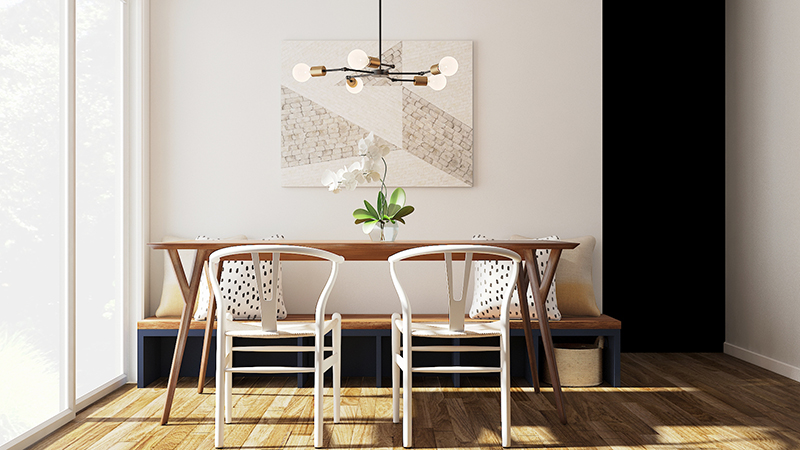
Artists can seamlessly place the same product in dramatically different environments with the help of digital product rendering technology. While one customer might be looking for a new desk for his home computer, another may be looking for new work desks for his whole office.
Furniture marketers anticipate this by having their designers place products in different environments so that various customers with distinct goals can see the product in an environment that aligns with their individual interests.
Take this second example. In one lifestyle image, a chic stool is placed behind a trendy-looking coffee counter. In another image, it is used as a plant stand inside a small office. Both images will appeal to different clients in distinct ways, while still procuring a sale from both of them.
16. Designers Can Adjust the Image According to the Campaign’s Theme
If your company wants to market the same furniture under a different theme, such as Christmas or Thanksgiving, it would be tedious and costly to purchase holiday items that are only going to be used once.
That’s why companies that release holiday-themed marketing materials benefit from creating a CGI library filled with virtual decor. When the time comes, they can simply take the virtual decorations from the library and implement them in both new and old 3D furniture renderings.
17. 3D Rendering Increases Click-Through Rate on Ads
Want to encourage viewers to click on your website ad or paid social post? Then you better provide something enticing and interesting for them to look at. Part of the beauty of 3D rendering is that it highlights the best features of a product.
Sometimes this might mean losing realism for the sake of a more flattering and enticing image. However, it will be more effective in encouraging viewers to click on your ads and scope out all your company has to offer.
18. Companies Can Test Market Demand for New Products Before Actually Producing Them
Back in the old days, furniture companies had to blindly produce and release new products without any clue or indication as to how they might do on the market. And, if they wanted to test these new products, they would have to spend a fortune on building high-quality prototypes. If they failed to gain any traction on the product, they would have to start all over, further losing time and money on it.
But digital product rendering has forever changed the way furniture companies operate and manage new product releases. With the help of 3D modeling companies and freelance CAD designers, furniture manufacturers can use product design images for testing and approving new furniture.
They start by designing a 3D rendering of the new, unreleased product. Marketers then gather pre-orders to estimate an end result for the piece. If the test launch proves to be successful and it brings in an abundance of pre-orders, marketers can be confident that the large-scale launch for the piece will be as successful as well.
19. Photorealistic Rendering Increases the Company Website’s Conversion Rate
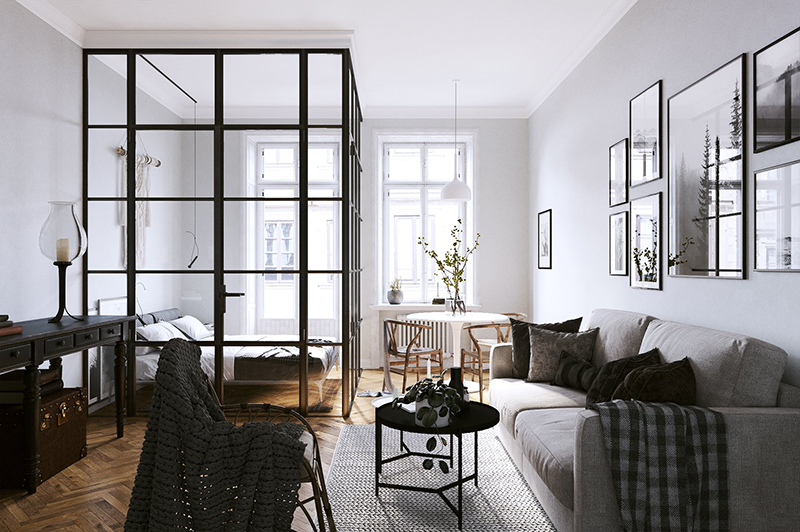
The more engaging and interactive a website is for visitors, the more likely they are to convert to customers. As a result, marketers are continually coming up with different ways to keep users engrossed in their website content.
Luckily, digital product rendering can be used for more than just changing the color of a sofa or the length of a table. You can create material that not only delights customers but informs and educates them as well.
Consider this for a second. There’s a good chance that you have experienced trouble assembling your own furniture in the past. Maybe the instructions are too vague. The photos and diagrams don’t make any sense. Companies are now turning to CGI modeling to create realistic animations demonstrating assembly instructions for a piece of furniture.
20. Companies Can Pre-Sell Products before They Are Even Made
With 3D rendering, you don’t need to build an actual furniture model to encourage customers to order it. As long as the 3D rendering remains realistic and detailed enough to thoroughly assess, customers will feel comfortable enough to pre-order the product. This can save you thousands of dollars if pre-sales for the product turn out lower than expected.
21. Marketers Can Create a Viral Video with a Low-Budget
Video marketing is one of the most effective methods for obtaining a high Return on Investment (ROI). Wyzowl’s 2017 State of Video Marketing survey found that 73% of viewers bought a product after watching a video and 81% of businesses saw an increase in sales after implementing videos in their marketing campaigns.
Rather than shelling out thousands of dollars to hire a director and producer to create video content, furniture companies are turning to CAD designers to create animated 3D photorealistic rendering.
These videos can contain anything from a time-lapse of a piece of furniture being assembled to a 3D tour of someone’s dream living room. Thanks to the rapid pace at which 3D rendering technology is advancing, anything is possible.
22. The Process and Personal Involvement for Product Visualization Decreases
For photoshoots, producers need to stay on top of supervising the shoot from beginning to end. Should anything go wrong during the shoot, the producer will need to be there to troubleshoot it. Unsurprisingly, this takes a toll on the producer’s time and energy.
But with 3D rendering, artists only need a blueprint to start working. Managers can check in at any stage of the project, allowing them more time to focus on managing the overall progress of the campaign.
23. Impress Customers by Staying Ahead of the Game with the Latest Technology
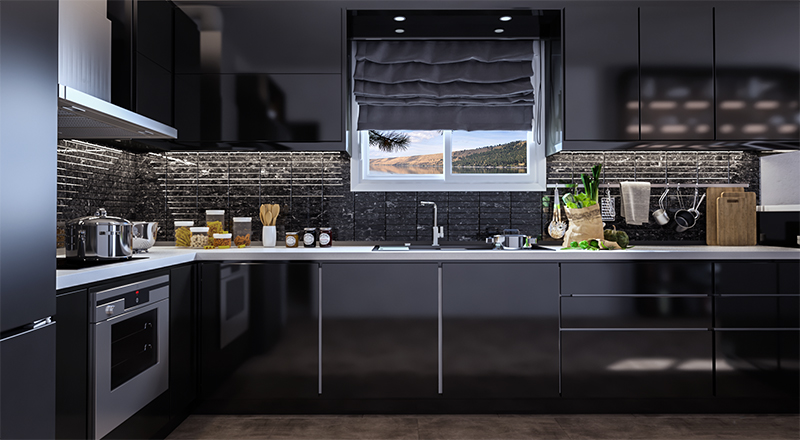
One effective method for establishing trust amongst potential customers is your company’s ability to stay on top of the latest technology and trends in the industry. The company that offers VR/AR capabilities will easily stand out from the companies that are dragging their feet and haven’t yet caught up with technology.
24. Artists Can Experiment With Old Designs
Old designs can always be improved and modified. 3D rendering software makes it easy for artists to play around and experiment with past designs to create new, exciting ones. Companies can then introduce these designs to a familiar market that they have found success with in the past, or take a risk and try to introduce it to an unexplored one.
25. More Prototypes Can Be Manufactured and Tested
3D printing is a fast and affordable method for creating complex, high-quality models. Designers across various industries will typically create a photorealistic rendering of a product that is then used to 3D print a prototype.
This prototype is then showcased at various presentations. Should the prototype receive unfavorable or negative reviews, the artist can simply redo the design before printing a new one.
26. Digital Product Rendering Improves Content Marketing Practices
Content marketing also plays a key role in boosting a website’s SEO. Blogs, in particular, are popular among content marketers for attracting visitors to their clients’ websites. Not only do they provide help websites rank for specific keywords, but they also increase brand visibility and establish the company as a trusted authority on various subjects.
So where does photorealistic rendering come in? Content marketing best practices dictate that websites should provide high-quality images throughout blog posts for high readability. Content marketers and writers often recruit CAD designers and engineers to create photorealistic renderings of furniture that they then add to their articles.
For instance, someone who is writing a guide to assembling a desk will need a designer to create 3D rendered illustrations demonstrating the instructions he or she is conveying throughout the article. Without these visual cues, the reader would be completely lost. If the images aren’t detailed enough, the reader will still fail to understand the article’s instructions. With 3D rendering, designers can visually convey every minute detail needed to help the reader successfully assemble their desk.
27. Customers Can See For Themselves Whether a Product Would Fit Well in Their Environment
Furniture marketers have also begun to create virtual reality (VR) panoramas and augmented reality (AR) apps that allow customers to see how furniture would look like in different areas of their homes. Instead of having to mentally envision the products inside their homes, they can see for themselves whether or not products complement different areas of their house. The Pottery Barn 3D Room View and the IKEA place mobile apps are two popular apps that allow customers to “virtually fit” their rooms using only the products sold by the respective companies.
3D Rendering Best Practices: IKEA
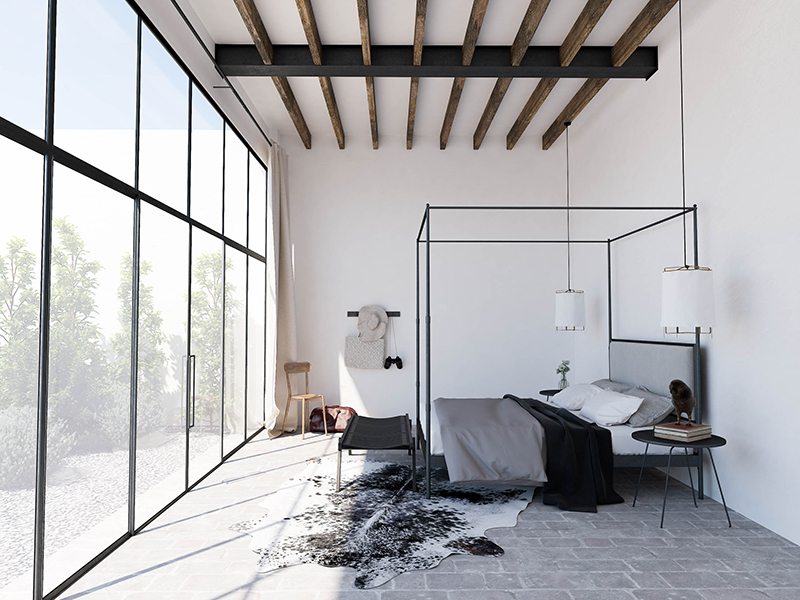
Back in 2014, the Swedish furniture company IKEA decided to switch from using traditional photography to 3D rendering services for its furniture catalogue. Since then, the company has been lauded for its beautiful 3D renderings displayed both in print and online. Customers who didn’t know any better often assume that they are looking at a photograph, rather than a digitally rendered image.
One of the company’s most innovative uses of 3D rendering technology is the IKEA Home Planner feature on its website.
IKEA Home Planner
Essentially, the IKEA Home Planner allows users to create digital replicas of different rooms in their house. Customers can adjust the dimensions of a room and add furniture, windows, doors, and wall partitions in order to keep the digital version of the room as accurate as possible.
Once they are finished replicating the room, they can add items from the IKEA catalogue. They may also customize these items, if they wish. When they are finished, they can save and print the render of their digital room. Each of the items they selected will be listed along with its price and ID number. The customer can then order the items online or purchase them at a store.
Popular 3D Rendering Software

Due to the growing demand for high-quality digital images amongst furniture manufacturers, there are numerous 3D rendering software programs on the market to choose from.
Finding the program that fits both your needs and your budget can be challenging. To help you out, we assembled a list of the most popular 3D rendering programs worth looking into.
Lumion: Lumion’s powerful software allows designers to create photorealistic renderings within seconds. In terms of usability, the application has an easy-to-use interface that takes little to no time to adapt to.
Lumion files are compatible with almost all other modeling software programs, making it easy to open and edit them on different 3D rendering software applications.
Companies can either purchase a license for the basic version at $1499 or the Pro version at $2999. Lumion also offers a trial version for companies that are still experimenting with different options.
Autodesk Revit: Autodesk Revit is one of the most well-recognized 3D rendering software programs available, and for good reason. Users can produce complete furniture designs using Building Information Modeling (BIM), an intelligent model-based process for designing and constructing objects.
The software also supports a collaborative design process by providing work sharing capabilities for multidisciplinary teams. Professionals can purchase the software for $280 a month. The company also offers a free trial and 30-day money-back guarantee for annual plans.
Octane Render: Over the past several years, Octane Render has gained recognition for its high-speed rendering engine. The software’s highlighted features also include deep pixel rendering, Open Shading Language (OSL), live texture baking, interactivity, and lighting. Companies can purchase a license for Octane Render for $399.
Blender: Blender is a free and open-source 3D creation suite. The website offers a plethora of features, including rendering, modeling, sculpting, animation, VFX, simulation, interface, and video editing.
3D rendering artists can use Blender’s unbiased rendering machine as well as Cycles, its ray-trace based production render engine, to create ultra-realistic images.
Recruit Cad Crowd’s Digital Product Rendering Services for Your Own Business
Are you planning to implement 3D rendered images into your next marketing campaign? Unless you already consider yourself capable enough to create these images yourself, you are going to need an expert in 3D design and rendering to assist you.
Luckily, Cad Crowd is here to help. Cad Crowd is an online platform that helps clients confidentially hire vetted CAD designers and freelance engineers. Companies can also launch design contests, where multiple freelance designers submit their ideas for the project.
Ready to take the leap into digital product rendering? Contact us today for a free quote.
